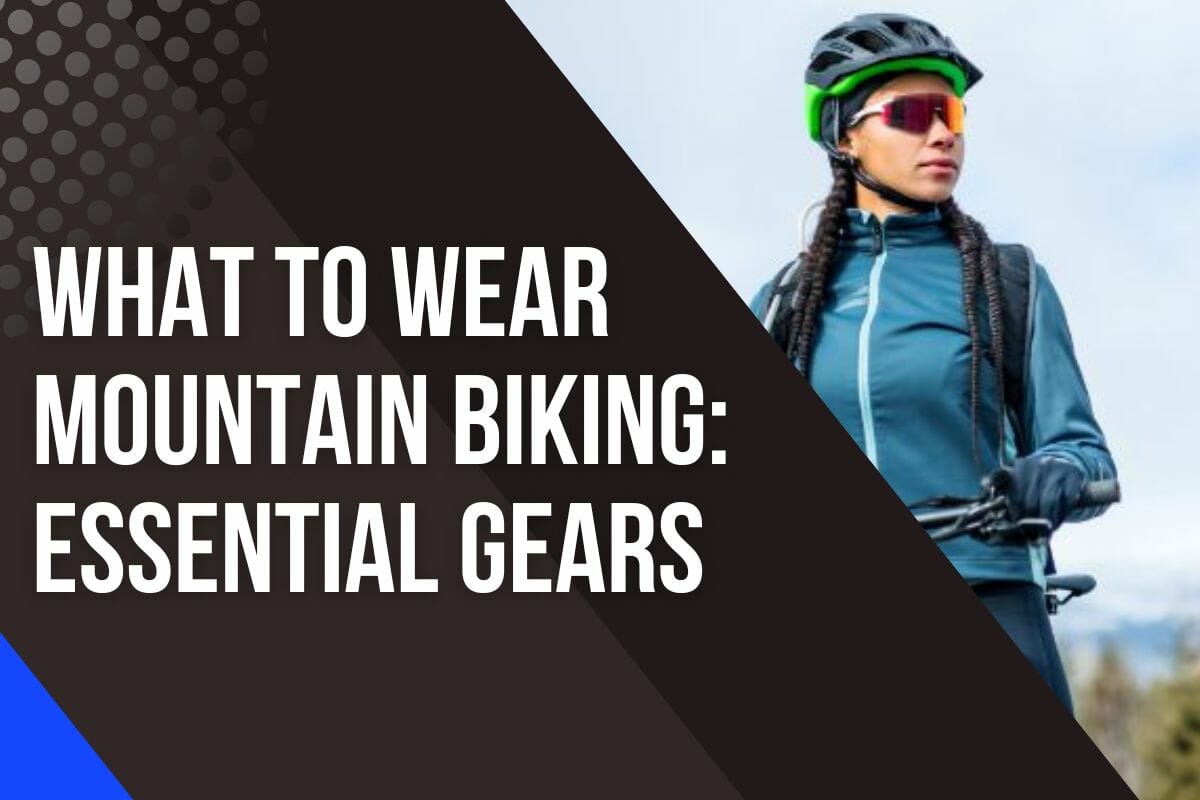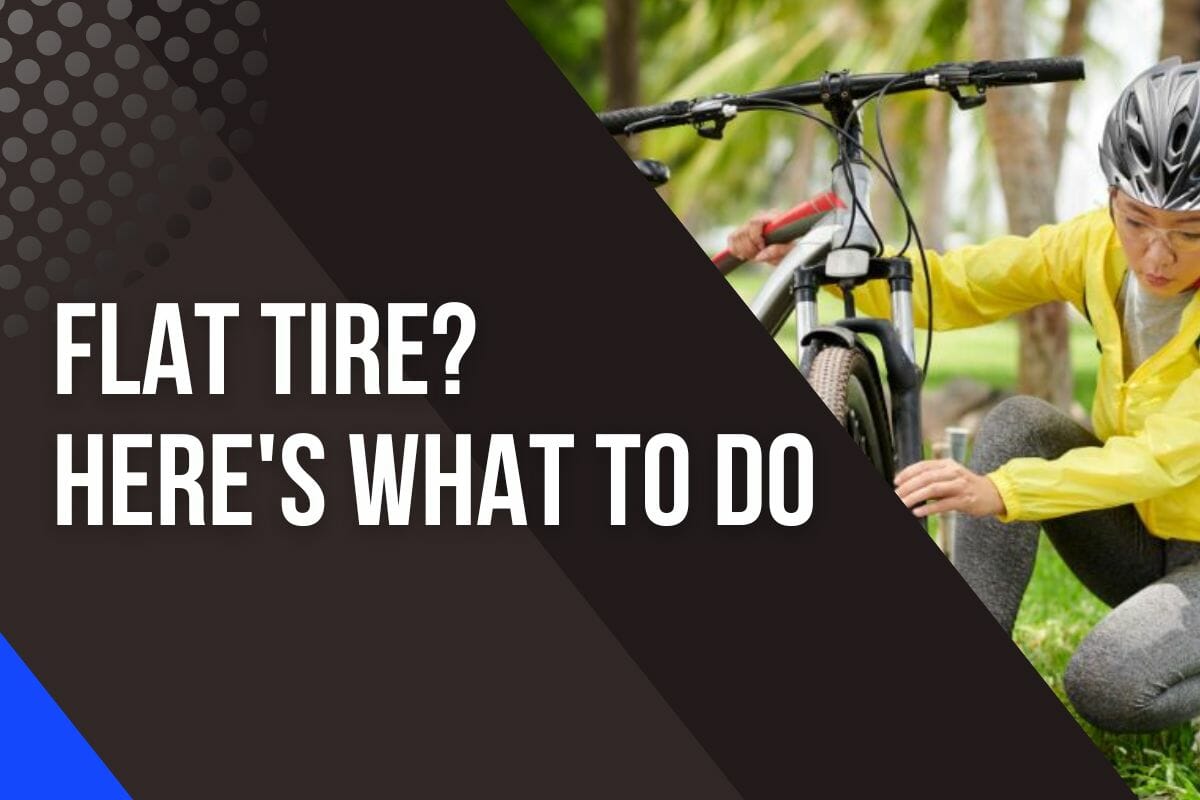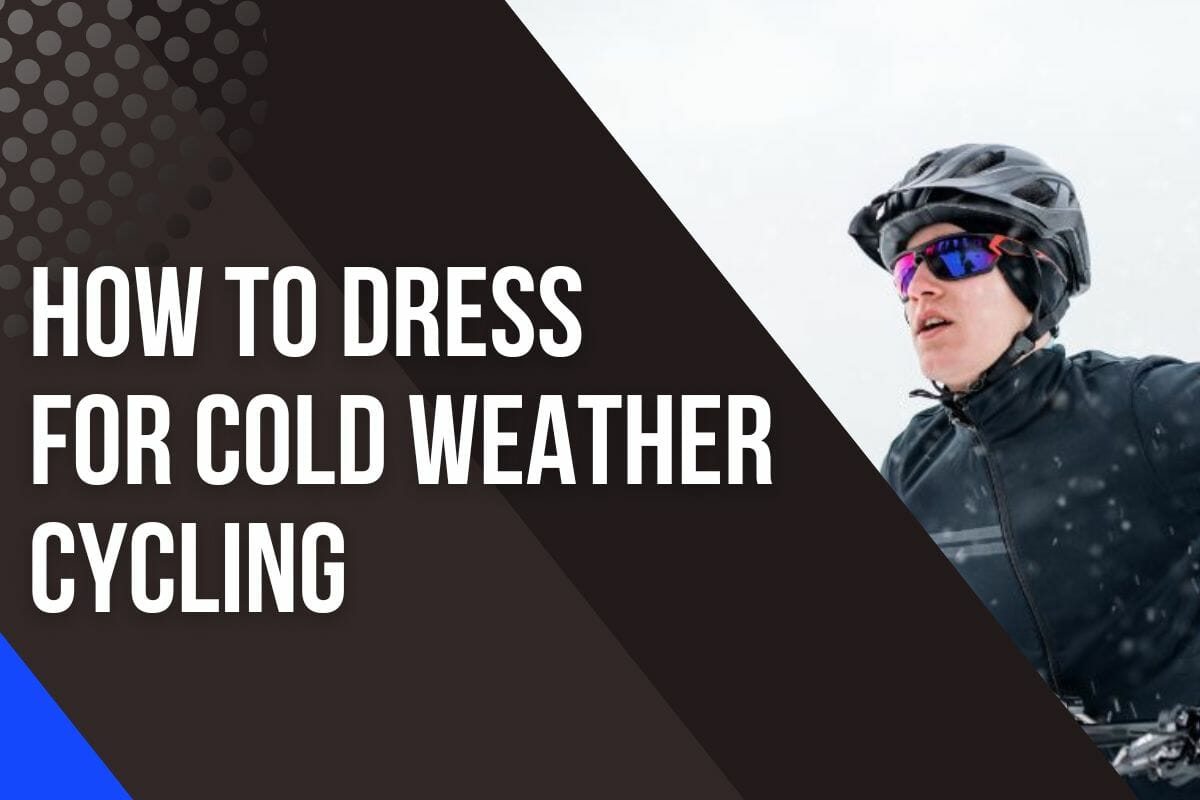How Tight Should A Cycling Jersey Be

Cycling is a great way to stay fit and active, but one of the most important decisions to make when it comes to cycling is finding the perfect jersey.
Too tight, and you won’t be able to move freely; too loose, and you may not get the desired performance out of your ride.
With cycling jerseys in particular, there are several factors to consider: design, material, and fit.
So how tight should a cycling jersey be? What about the size? How to get the perfect fit?
Read on to find out!
3 Main Types Of Jersey Fits
When choosing a cycling jersey, the type of fit is an important factor to consider. There are three main types:
- Race-fit
- Club-fit
- Pro/Aero Fit
For me, I prefer to go with a race fit.
It offers just the right amount of compression so that it’s snug against my body without being too tight.
It does take some trial and error to find the perfect fit for your body type, but once you do, you can expect a comfortable ride with no excess fabric gathering in uncomfortable places.
Below, I explain the difference between these 3 types of jersey fit.
1. Race Fit
Race fit jerseys are designed for competitive cyclists and they are my go-to when it comes to cycling.
They fit snugly against my body without being restrictive, and the compression helps keep me warm during long rides.
The race-fit jersey is engineered to keep you comfortable during a long-distance ride, helping riders perform better and remain cooler throughout the journey.

Despite its close fit, the jersey is designed to be unaffected by heavy wind.
Through improved airflow and lightweight construction, these types of jerseys provide optimal riding performance for those looking for a competitive advantage in cycling.
Overall, I’m very happy with how race-fit jerseys feel and how they perform, making them worth the extra money spent on a quality kit.
2. Club Fit
Club-fit jerseys are a great option for those who don’t need the form-fitting cut of a race-fit jersey.
The looser fabric allows for more movement and comfort during longer rides and can be beneficial for those cyclists with larger body mass.
Club fit jerseys may not be as aerodynamic as their race-fit counterparts, but they still provide enough coverage to keep you warm without causing uncomfortable bunching or chafing.
When selecting a club-fit jersey, make sure to measure your body properly and refer to the sizing chart provided by the manufacturer before purchasing.

An inch of fabric in either direction can make a huge difference between an enjoyable ride and a painful one.
Though often compared to t-shirt style fits, club fit jerseys distinguish themselves by having a tailored look that still provides better ventilation than traditional standard cotton shirts.
The fabric also has superior moisture-wicking properties that keep cyclists dry on rides of any length and intensity.
So whether you’re casually cruising your local trails or taking on an epic downhill run, club-fit jerseys are designed to get you there in both looks and performance.
3- Pro/Aero Cut
Pro/Aero cut cycling jerseys are designed to be the “second skin” and very tight and slim.
They provide a snug, body-hugging fit that is intended to be aerodynamic and decrease drag as you ride.
This type of jersey also typically features fewer pockets than other types of jerseys, since they are meant to be lightweight and keep excess material from gathering around your waist or arms.

How To Find Your Cycling Jersey Size
Finding the right size cycling jersey can be tricky, especially if you’re shopping online.
To make sure you get the perfect fit, it’s important to take accurate measurements of your body first.
Start with a flexible tape measure and measure around your chest, waist, and hips.
Then use the manufacturer’s sizing chart to find your best fit.
If you are between sizes or have a unique body shape, opt for the larger size for more comfort.
For pro/aero cut jerseys, it is important to get the right size as these are designed to provide an aerodynamic fit that hugs your body tightly.
Too small and you won’t be able to move freely while riding; too big and you may end up with excess material gathering around your waist or arms while riding.
Here are the tips for each measurement:
1. Chest Size
To get an accurate chest size guide, measure your chest circumference and compare it with a sizing chart.
The method of measuring your chest will depend on whether you are buying men’s or women’s jerseys.
When measuring for a men’s cycling jersey, measure from just below the armpits around the widest part of the chest.
For women’s jerseys, measure around your bust at its fullest point.
Once you have measured yourself accurately, use a chest width chart to determine what size jersey fits best.
2. Waist Size
Start by wrapping a measuring tape around your body, evenly between the top of your hips and the bottom of your ribs.
Make sure the tape does not get too tight as this will give a false reading, just tight enough for there not to be any slack in the material.
Remember to take a deep breath and keep everything relaxed while taking the measurement, to prevent inaccuracies due to contracting muscles while exhaling or inhaling.
Try taking 2 measurements and comparing them before noting down the number – this way you can ensure that your belly was neither poked out nor sucked in during measurement time.
3. Hips Size
To do this, wrap the tape around the widest part of your hips and make sure it includes your butt.
The tape should be snug but not tight, so it doesn’t move around too much during use.
If you’re ever uncertain about how to get an accurate measurement, look at the video guide above or in stores that can demonstrate the proper technique for hip size measurements.
How Tight Your Jersey Should Fit
The perfect fit is the one that fits snugly like a second skin.
It should wrap around your upper body without restricting your arm movements in any way.
You should inspect the chest and shoulder area for any creases or wrinkles that might occur due to an ill-fitting garment since this will not only produce an unflattering silhouette but could also cause discomfort when worn.
When trying on a jersey, make sure to leave a bit of breathing room and don’t size down too much, as you’d want to be able to zip up the jersey with ease if needed.
At the same time, if there is more than half an inch of fabric that can be pinched between two fingers at the sides and back of the garment, the jersey may likely be too loose for you.
Here are some pro tips.
Extra Length At The Back
A cycling jersey should be snug but not too tight.
The back of the jersey should be slightly longer than the front to provide extra length and coverage when in a riding position.
This is because when you’re in the riding position, your torso shortens at the front and lengthens at the back.
This additional length helps keep your lower back covered as you ride.
2-Inches Below The Belly Button
The front of the jersey should be shorter than normal so that it does not interfere with your movement or hinder your performance while on the bike.
One common issue that cyclists encounter while riding is the unsightly bunched or wrinkled fabric at the bottom of their jersey that hangs down below their stomach/belly button area.

This phenomenon, sometimes referred to as “stomach wiener” by cyclists, results when a rider hunkers down on their bike, causing the front of the jersey to pull forward and shorten up, resulting in an excess fabric that bunches up near the chest area.
Longer Sleeves
Having longer sleeves can be essential for a comfortable bike ride, especially if you’re riding long distances.
The ideal sleeve length should come to about 1 to 2 inches from your elbow when you’re standing off of the bike.
As you extend your hands onto the handlebars, the sleeves will usually roll up some, preventing them from digging into your armpits uncomfortably or riding up too far and leaving your wrists exposed.

Sleeves should also be snug enough that they don’t flap in the wind as you ride faster.
Hearing fabric flapping away is distracting and just generally annoying and can throw off concentration while cycling, so having appropriately fitted sleeves is a great investment.
When measured while standing, remember to account for any extra fabric that could roll up on the handlebars too far and make sure they fit snugly but not too tight on your arms!
No Sagging Waist
Your waist grippers should fit appropriately when you first purchase them.
If they are too loose, then your pockets will start to sag as you fill-up the rear of the cycling shorts with your gear.
Even if the waist grippers fit you well initially, having a sagging waist can make it worse as they are filled with your essential items while out on the road.
This can become uncomfortable and can even be a distraction as you’re riding.

A Full Front Zip
A full front zip is a must-have feature on my cycling jersey.
Not only do they make it easier to pull on and remove the jersey but they offer more ventilation which is essential on hot days.
There’s nothing worse than having to struggle with a jersey that won’t come off when you’re sweating buckets!
With a full front zip, I can easily adjust the fit of my top for maximum comfort.

I also like that I can leave the zipper partially open to allow some air circulation and cool me down during long rides.
Just make sure you wear something under the cycling jersey (base layer for men and sports bra for women).
Three Rear Pockets
When it comes to the rear pockets of a cycling jersey, they are usually designed with three pockets of varying sizes located at the back waistband.
Not only do they offer more storage space for energy bars and other essentials, but I also love how secure they are – no matter how much I’m bouncing around on the bike or taking sharp turns, my items remain safe and sound.
Having three pockets instead of two also gives me the option to separate my items by type – like snacks in one pocket and tools in another.
It’s so nice to have everything organized and easily accessible when I need it.
Try At The Shop If Possible
When it comes to buying a cycling jersey, there’s no better way than trying one on at the shop.
Many cyclists opt for digital purchases and end up having to return items that don’t fit or weren’t made for the intended purpose.
However, if you have the opportunity, try before you buy whenever possible at a shop or other location.
This allows you to try out equipment in person and feel the quality of both materials used and the overall comfort of a product.
This is especially true if you’re unsure about size and fit.

When trying on jerseys or other garments, pay attention to your posture while wearing them. Not only is it important that they fit properly, but also check whether it flatters your body shape.
If there are any pockets in the back, make sure that they will be comfortable when filled with items, as many cyclists carry all sorts of items on rides.
Lastly, inquire about customer reviews and ask associates if there is any specific information like height or weight details related to a particular jersey or fit.
Take time to test out several jerseys before committing to buy one as this process can help save money by ensuring that you get the right size every time.
It also allows you to compare materials, features, colors, and prices so that you end up with an item that meets all of your needs without breaking the bank.
Doing these steps can ensure that you find the right piece of clothing or wheel size without having to send it back later due to incorrect sizing.
Why Comfortable And Fitted Jerseys Are Essential
As a cyclist, I understand the importance of a comfortable and fitted jersey.
Here are three key reasons why it is essential to have fitted, comfortable jerseys:
- The material of a fitted jersey enables it to wick sweat away from my skin, which is important to stop dehydration. This also facilitates evaporation, thus keeping me cool so I don’t overheat.
- A jersey that fits well will reduce air resistance, which is essential as my speed increases. Air resistance causes more energy to be expended while cycling, so a fitted jersey will help the cyclist move more smoothly.
- A properly fitted jersey will protect the cyclist from chafing and rashes. Any air pockets or overly tight areas can cause chafing and painful skin, making cycling very uncomfortable.
There is nothing worse than having to stop mid-ride due to an ill-fitting jersey or one that’s too tight and constricting.
Do Your Homework When Shopping Online
Shopping online can be a great way to find clothes and cycling gear, but it is important to know your measurements before you order anything.
Most cycling brands will have a size guide available on their website that you can use when selecting your items.
The size chart usually lists waist, chest, and hip measurements for each size of the clothing item you are looking at.

By accessing this chart, you can easily make sure that what you select will fit your body properly.
It is also easy to talk yourself into ordering something that maybe isn’t the right size and often times customers will think they should go with a bigger option so that it won’t be too tight.
However, without reading the chart carefully and accurately measuring yourself, then items may still come up too small or too large.
This can easily be avoided by looking at the sizing charts beforehand and making sure that you double-check all of the measurements against your own body measurements.
Then once you have picked out your jersey and checked the sizing chart on the page, you can feel confident that it will fit correctly when it arrives at your door.
My Verdict
When purchasing a cycling jersey it is important to consider the material, fit and safety features.
The right fit of your jersey can make all the difference in terms of comfort while you’re riding.
For men’s jerseys, they should be snug but not too tight; for women’s, there should still be a bit of room at the waist or hips so that it doesn’t feel constricting.
You may also want to look for jerseys with special sun-protection fabric if you plan on biking in sunny conditions often.
Remember that not all cycling jerseys are created equal – take some time to find one that fits correctly and provides any necessary safety features so you can enjoy your ride without worrying about discomfort.





